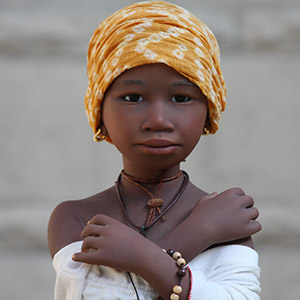How Do Toys Affect A Child’s Self-Image, View of Society?
“Everything they interact with teaches them… what they themselves are like in the world,” says Christia Spears Brown.


Recently, a two-year old girl in South Carolina went into a Target to pick out a doll. When she and her mother went to check out, the store clerk asked the girl, who was white, why she would pick out that doll. It was black. The cashier asked her why she wouldn’t rather pick a doll that looks like her. “She does (look like me),” she said… “She’s a doctor; I’m a doctor. She is a pretty girl; I am a pretty girl. See her pretty hair? See her stethoscope?”
The story went viral and sparked conversations across the country about how racial attitudes develop in young kids.
How do toys shape the way kids see themselves and others in the world? Not just when it comes to race, but also gender and society in general and children’s place in it?
Patrina Chatman, curator of collections and exhibitions at the Charles H. Wright Museum of African American History, curated the “I See Me: Reflections in Black Dolls” exhibit showcasing the history and stories of black dolls. Detroit Today host Stephen Henderson speaks with her about how the exhibit approaches this issue.
“We were trying to help African Americans,” says Chatman. “Not only children, but adults when they come in to feel good about how they look, what they do in life, without having any preconceptions about looking like someone else… This is a concern and it’s been an ongoing concern about African Americans and their self identities, self esteem.”
Chatman is alluding to a few telling studies, starting back in the 1940s and continuing into the 2000s, during which children were asked which doll they preferred, a black doll or a white doll. The vast majority of the children, including African Americans, chose the white doll, demonstrating at early ages an internalized bias against blackness.
“We also talked about how dolls were used in Africa,” says Chatman, “not necessarily as toys, but to help a child understand where they fit in their culture.”
Henderson continues the conversation with Christia Spears Brown, associate professor at the University of Kentucky and author of “Parenting Beyond Pink and Blue: How to Raise Your Kids Free of Gender Stereotypes,” who affirms the use of play and toys as teachers for children and their self-image.
“For kids, everything is educational… Everything they interact with teaches them what the world is like and in turn what they themselves are like in the world… They have to pick all that up on their own and how they do it is through play… And we know that if things are familiar, we’re more comfortable with them… I think black dolls are important for black kids, but also for white kids, to show that there’s not just one image of what could be kind of ‘normal’… It [takes] the dialogue about what’s considered mainstream and changes it to say diverse is normal.”
To hear the full conversation, click the audio player above.

